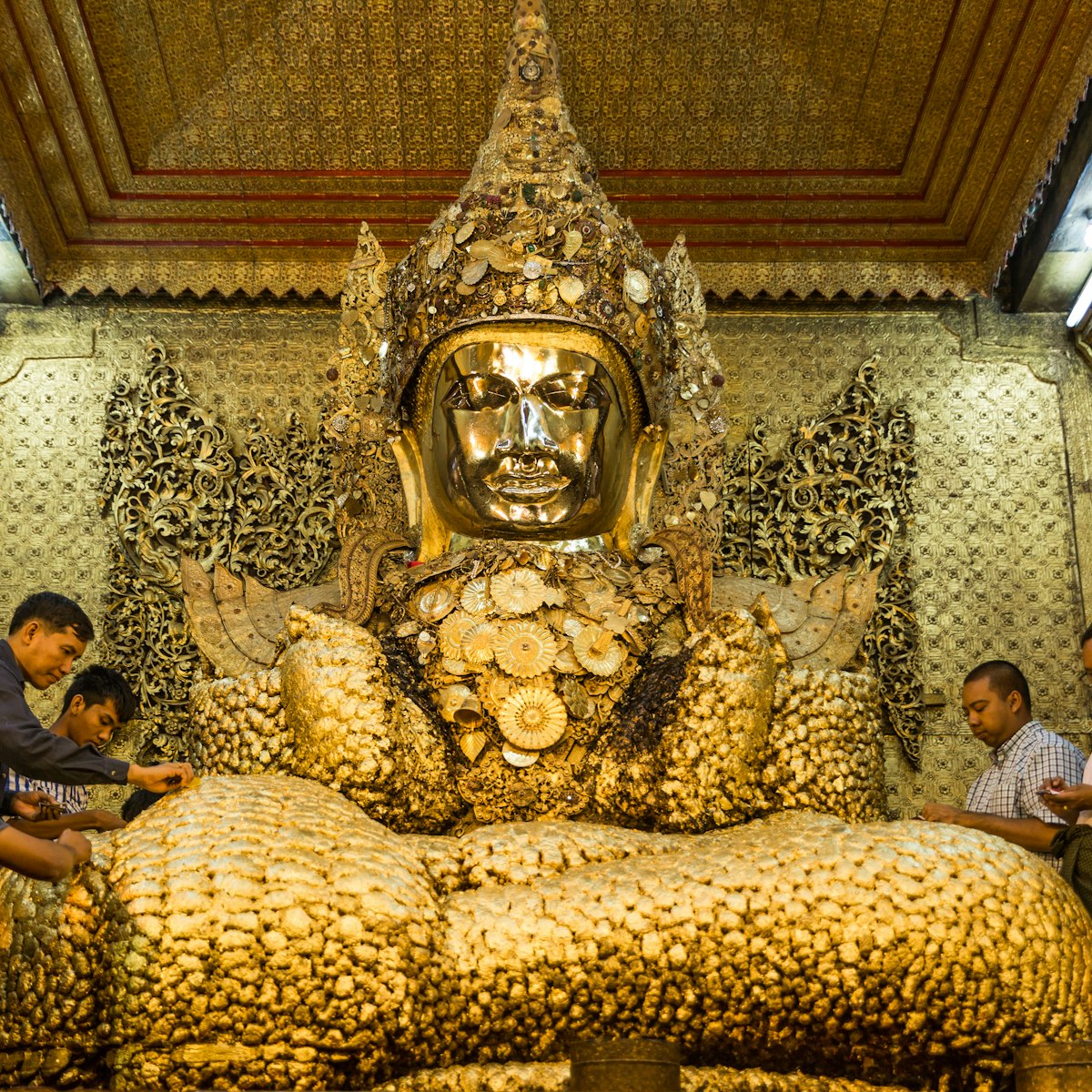Built in 1816 by King Bagyidaw, possibly using materials pilfered from Mingun Paya, this unusually striking pagoda rises in seven wavy, whitewashed terraces representing the seven mountain ranges around Mt Meru (the very topmost stupa), the mountain at the centre of the Buddhist universe. Like the Taj Mahal, this paya was meant as a monument to the tragic death of the king's wife, Queen Hsinbyume, who died in childbirth. The climb to the top is worth it for the views.
Lonely Planet's must-see attractions

6.47 MILES
To get a sense of Mandalay’s pancake-flat sprawl, climb the 760ft hill that breaks it. The walk up covered stairways on the hill's southern slope is a…

8.19 MILES
Every day, thousands of colourfully dressed faithful venerate Mahamuni's 13ft-tall seated buddha, a nationally celebrated image that’s popularly believed…

29.49 MILES
Founded in 1915 and carved out by Turkish prisoners captured by the British during WWI, this lovingly maintained 435-acre botanical garden features more…

10.92 MILES
Staring distantly towards Mandalay Palace, temple-topped Yankin Hill is worth climbing for views of greater Mandalay's rice-field setting and of the Shan…

11.6 MILES
The world’s longest teak footbridge gently curves 1300yd across shallow Taungthaman Lake, creating one of Myanmar’s most photographed sites. In dry season…

14.62 MILES
This lovely 1834 teak monastery is Inwa’s most memorable individual attraction. It's supported on 267 teak posts, the largest 60ft high and 9ft in…

6.96 MILES
A meditative departure from the usual Burmese 'douse-it-all-in-gold-and-pastels' aesthetic, this gorgeously carved teak monastery is beloved by tourists…

10.71 MILES
This ‘early offering shrine’ is the most important of the temples on Sagaing Hill’s southern crown and the first you’ll come to on climbing the One Lion…
Nearby Myanmar (Burma) attractions
0.21 MILES
In 1808 Bodawpaya continued his biggest-is-best obsession by commissioning a bronze bell weighing 55,555 viss (90 tonnes). It’s 13ft high and more than…
0.34 MILES
Begun in 1790, Mingun Paya would have been the world’s biggest stupa if it had been completed. Work stopped in 1819 when King Bodawpaya died, and at that…
0.36 MILES
Across the road from Mingun Paya lie two house-sized brick-and-stucco ruins, damaged in the 1838 earthquake. These are just the haunches of what would…
0.52 MILES
To see what Mingun Paya would have looked like had it ever been completed, have a quick look at diminutive Pondaw Paya, 200yd south at the end of the…
5.63 MILES
If you can stomach the smell, this atmospheric scene of fish mongering close to the Ayeyarwady River is worth an afternoon look (it gets most active from…
5.69 MILES
This small market takes up a few blocks, which by midday become littered with multicoloured clouds of blossoms and piles of cut stems and leaves.
6.1 MILES
This pagoda's claim to fame – besides its gold stupa – is a Buddha image that supposedly dates to the reign of Indian emperor Ashoka.
6.25 MILES
Ranged around a sizeable stupa glowing with gold leaf, Eindawa was founded in 1847 by King Pagan Min, whose princely palace once stood here. The complex…







